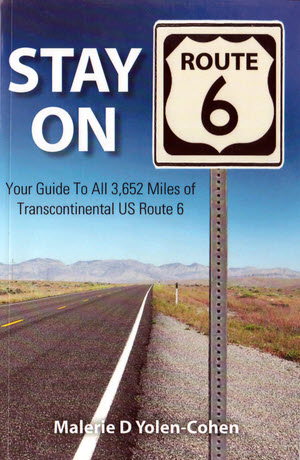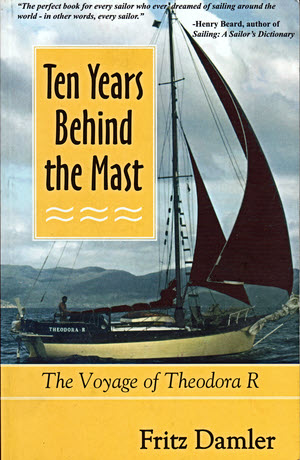 Before I get around to actually talking about this book, I am going to tell how I learned of its existence. I first saw Theodora R, the boat whose mast the author was behind, in July of 2011. I was in Albuquerque, New Mexico, when a friend tipped me off to a nearby museum called Tinkertown. The museum was different than anything I’d ever seen and the boat was different than anything else in the museum. There were similarities, of course, because the same man who created the museum of small items, many hand carved, had also created the signage and other details in the display of the thirty-five foot boat. Then another similarity occurred to me. The unique folk art museum created by Ross Ward represented his “Follow Your Heart” attitude and the boat that Fritz Damler sailed around the world represented that same attitude. Now the boat didn’t seem out of place at all.
Before I get around to actually talking about this book, I am going to tell how I learned of its existence. I first saw Theodora R, the boat whose mast the author was behind, in July of 2011. I was in Albuquerque, New Mexico, when a friend tipped me off to a nearby museum called Tinkertown. The museum was different than anything I’d ever seen and the boat was different than anything else in the museum. There were similarities, of course, because the same man who created the museum of small items, many hand carved, had also created the signage and other details in the display of the thirty-five foot boat. Then another similarity occurred to me. The unique folk art museum created by Ross Ward represented his “Follow Your Heart” attitude and the boat that Fritz Damler sailed around the world represented that same attitude. Now the boat didn’t seem out of place at all.
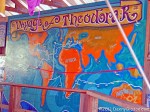
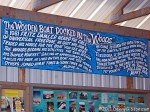 I had chatted with Ross Ward’s widow, Carla, when I first arrived and learned just a bit about the man who passed away in 2002. I spoke with her again before leaving and learned that Fritz Damler was her brother and that he now lived in the Bahamas. I can’t recall why I didn’t buy this book on that first visit. Maybe I was really watching cash flow on the way home from a west coast road trip or maybe I wasn’t even aware that it existed. Carla is not much into high pressure sales. I bought it three months ago on my second visit.
I had chatted with Ross Ward’s widow, Carla, when I first arrived and learned just a bit about the man who passed away in 2002. I spoke with her again before leaving and learned that Fritz Damler was her brother and that he now lived in the Bahamas. I can’t recall why I didn’t buy this book on that first visit. Maybe I was really watching cash flow on the way home from a west coast road trip or maybe I wasn’t even aware that it existed. Carla is not much into high pressure sales. I bought it three months ago on my second visit.
Ten Years Behind the Mast was published seven years ago. Fritz Damler completed his circumnavigation fifteen years before that. Maybe taking fifteen years to finish a book about a ten year journey is a little higher than average but it makes me feel less guilty about coming to it seven years later. A friend and I once met a couple who were sailing south along the Americas’ east coast. Fritz’s publishing — and living — schedule reminds me of something they said often: “If we were in a hurry, we wouldn’t be on a sailboat.”
You also wouldn’t be living on a sailboat without wide ranging skills and the willingness to learn more — sometimes instantly. It isn’t too far fetched to believe that Fritz spent his first thirty-two years training for this journey. He was building guitars for a living immediately before acquiring the Theorora R and he was actually well into building his own wooden boat for the trip when he was betrayed by the epoxy he used and it fell apart. Some of his other jobs included paramedic, volunteer fireman, musician, and ski instructor. Each of those, and no doubt others, provided experience and training that served him well on his journey.
His wife was along when the trip started but it turned out she wasn’t as keen about living on a thirty-five foot boat as she initially thought and she was nowhere near as keen on sailing around the world as Fritz was. Before long, Fritz was without a wife which also meant he was without a permanent crew. Some of the sailing was done solo but most of it was done with an ever changing cast of characters which are all identified and described to some degree. So too are most, if not all, of the ports where Fritz and Theodora R dropped anchor and many of the people he met in those ports. It is a lot to pack into a couple hundred pages but Damler does a pretty good job of covering the ten years evenly.
There are visits from friends and family and Damler never really loses connection with the USA but he does get up close and sometimes personal with a lot of different cultures. He is able to report that fruit bat, the daily special of a Madagascar restaurant “tastes like sweet chicken”. He determined that a small village on New Guinea’s Sanaroa Island was the most remote he ever visited with the help of his guitar. It was the only place where not one person showed even a flicker of recognition when he played “House of the Rising Sun”. That is remote indeed.
Through lots of little glimpses, Damler provides something of a feel for what cruising through far off waters is like. Theodora R was far from alone in doing this. Apparently a sizable “cruisers” culture exists though not everyone is heading around the world or living aboard full time. It is ever so slightly like the RV culture with distances and degree of isolation cranked up to imagination challenging levels.
This is not a guide book or a how to sail book. It is a story book that tells a true and entertaining story. Damler’s writing style makes the reading easy without excess tension or artificial suspense. The final phrase of the back cover blurb sums it up pretty well. “…his story of a decade at sea has it all: Discovery. Heartbreak. Misadventure. Salt.”
Ten Years Behind the Mast, Fritz Damler, Jackson Harbor Press, 2006, paperback, 8.4 x 5.5 inches, 211 pages, ISBN 978-1890352202.
Available through Amazon.
On my first visit to Tinkertown, seeing and reading about Damler’s boat instantly reminded me of one of my favorite Michael McCloud songs, Chasin’ the Wind. I quoted from it in the journal entry for that 2011 visit. Here is a little longer quote:
The job got to feel just like an anchor
and that young wife started to roll just like the waves.
So he traded them both for a sturdy old boat
and the one dream that he’d always saved.
And another couple of lines:
Seen most of the world and a few lovely girls
who spent a short time working as the crew.
When I left Tinkertown after the 2013 visit, I had Damler’s book in my trunk and McCloud’s song in my head. The day after arriving home from that trip I listened to Chasin’ the Wind as I drove to meet friends. Before the song was even half over, I had decided where I would be going for Christmas. For several years now, I have made a “Christmas Escape Run” around the year end holidays. I have been to Key West and seen Michael McCloud just twice; Most recently on on my 2008 “Christmas Escape Run”. Sometime around Christmas 2013, I intend to be in Key West, Florida, where I can listen to Michael McCloud and at least look at some sailboats.
ADDENDUM 21-Aug-2015: It took a new comment to draw my attention to one I’d missed over a year before and, when that happened, I reread my announcement of firm intentions to head to Key West for Christmas. It didn’t happen. It wasn’t until Christmas of 2014 that I made it to Key West.

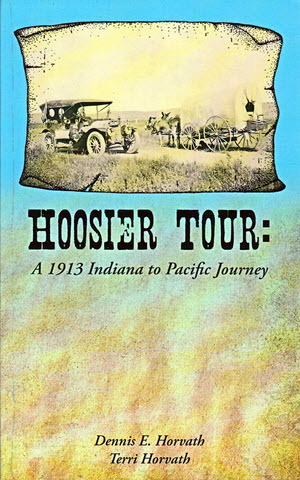 Carl Fisher was a busy man in 1913. His Prest-O-Lite Company and his automobile dealership were both going great guns, the Indianapolis Motor Speedway he co-founded looked like it might amount to something, the Ocean-to-Ocean Rock Highway he had proposed in September of 1912 was taking off, and then there was the Indiana Automobile Manufacturers’ Association.
Carl Fisher was a busy man in 1913. His Prest-O-Lite Company and his automobile dealership were both going great guns, the Indianapolis Motor Speedway he co-founded looked like it might amount to something, the Ocean-to-Ocean Rock Highway he had proposed in September of 1912 was taking off, and then there was the Indiana Automobile Manufacturers’ Association.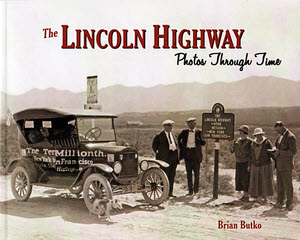 I was hesitant to post a review of this book because some of those “Photos Through Time” are mine but I decided that it would be a bad thing only if I rave about how marvelous the book is. No harm in simply describing it, right? So here are the facts.
I was hesitant to post a review of this book because some of those “Photos Through Time” are mine but I decided that it would be a bad thing only if I rave about how marvelous the book is. No harm in simply describing it, right? So here are the facts.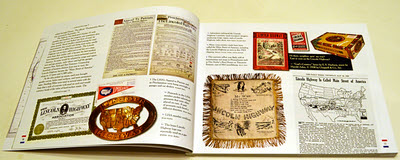 It is organized neither geographically nor chronologically. The first section following the foreword is titled “History”. Here, among pictures of collectibles and artifacts, Butko gives a very brief history of the road’s birth and short life. It is enough to give someone who knows little or nothing about the Lincoln Highway a starting point and someone who knows everything a quick refresher on key dates and events. It is a stripped down but adequate introduction to the pictures that follow.
It is organized neither geographically nor chronologically. The first section following the foreword is titled “History”. Here, among pictures of collectibles and artifacts, Butko gives a very brief history of the road’s birth and short life. It is enough to give someone who knows little or nothing about the Lincoln Highway a starting point and someone who knows everything a quick refresher on key dates and events. It is a stripped down but adequate introduction to the pictures that follow.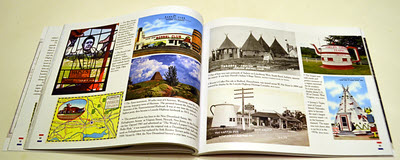 Those pictures are organized by their subjects. Butko identifies ten things that comprise the Lincoln Highway and gives each one a chapter. They are “People”, “Gas”, “Food”, “Lodging”, “Vehicles”, “Attractions”, “Signs”, “Markers”, “Bridges”, and “Roads”. The chapters are themselves samplers. Historic images from postcards and other sources are combined with modern photographs. Images of things along the road, which is every chapter other than “People”, are from locations spread over the road’s entire length.
Those pictures are organized by their subjects. Butko identifies ten things that comprise the Lincoln Highway and gives each one a chapter. They are “People”, “Gas”, “Food”, “Lodging”, “Vehicles”, “Attractions”, “Signs”, “Markers”, “Bridges”, and “Roads”. The chapters are themselves samplers. Historic images from postcards and other sources are combined with modern photographs. Images of things along the road, which is every chapter other than “People”, are from locations spread over the road’s entire length.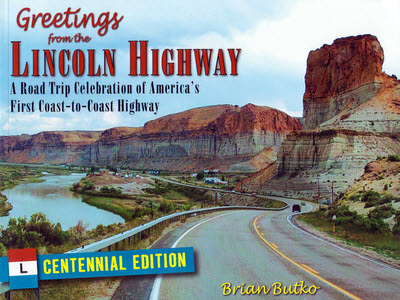 The Lincoln Highway turns a hundred this year. Brian Butko’s Greetings from the Lincoln Highway turns eight. At first glance, the 2013 Greetings… looks an awful lot like the 2005 Greetings… with a soft cover and a “Centennial Edition” banner on the front and it’s a fact that, in many ways, it is the same. It has the same organization with an introductory chapter and a chapter, with map, for each state the highway passed through and a very high percentage of the words and pictures in those chapters are the same, too. Another thing that remains the same and which accounts for the small in percentage but large in number changes is the care and attention to detail. Butko probably didn’t catch everything in the book that the passage of time has altered but he sure tried and he sure got a lot.
The Lincoln Highway turns a hundred this year. Brian Butko’s Greetings from the Lincoln Highway turns eight. At first glance, the 2013 Greetings… looks an awful lot like the 2005 Greetings… with a soft cover and a “Centennial Edition” banner on the front and it’s a fact that, in many ways, it is the same. It has the same organization with an introductory chapter and a chapter, with map, for each state the highway passed through and a very high percentage of the words and pictures in those chapters are the same, too. Another thing that remains the same and which accounts for the small in percentage but large in number changes is the care and attention to detail. Butko probably didn’t catch everything in the book that the passage of time has altered but he sure tried and he sure got a lot.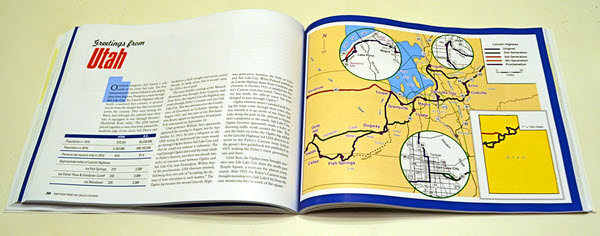 Aside from the occasional new photo, the most visible changes may be in the statistics and maps at the front of each state chapter. Here population numbers from the 2010 census replace those from the 2000 census and the maps get a line for the Proclamation Route. The Lincoln Highway Proclamation Route was a list of cities published by the Lincoln Highway Association on September 14, 1913. Shifts started happening almost immediately and a detailed route was never signed or published that matched the September 14 announcement. But several of the cities dropped in 1913 fought unsuccessfully to return and many have fought more recently and more successfully to be recognized. Butko acknowledges that by including the ephemeral route. All of the quotes from postcards and other period communication that appeared in the margins of the original are still there and a few more have been added.
Aside from the occasional new photo, the most visible changes may be in the statistics and maps at the front of each state chapter. Here population numbers from the 2010 census replace those from the 2000 census and the maps get a line for the Proclamation Route. The Lincoln Highway Proclamation Route was a list of cities published by the Lincoln Highway Association on September 14, 1913. Shifts started happening almost immediately and a detailed route was never signed or published that matched the September 14 announcement. But several of the cities dropped in 1913 fought unsuccessfully to return and many have fought more recently and more successfully to be recognized. Butko acknowledges that by including the ephemeral route. All of the quotes from postcards and other period communication that appeared in the margins of the original are still there and a few more have been added.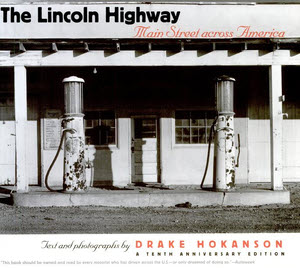 I’m reading this book for the third time. I read it around 2005 when I was dabbling with short drives on the Lincoln Highway to my east. I reread it in 2009 when I was getting ready to drive the Lincoln from the east edge of Illinois to the west coast. My current read is in anticipation of another long, hopefully full length, drive of what Drake Hokanson calls Main Street across America. I never read the original, only the pictured Tenth Anniversary Edition which is now fifteen years old itself.
I’m reading this book for the third time. I read it around 2005 when I was dabbling with short drives on the Lincoln Highway to my east. I reread it in 2009 when I was getting ready to drive the Lincoln from the east edge of Illinois to the west coast. My current read is in anticipation of another long, hopefully full length, drive of what Drake Hokanson calls Main Street across America. I never read the original, only the pictured Tenth Anniversary Edition which is now fifteen years old itself.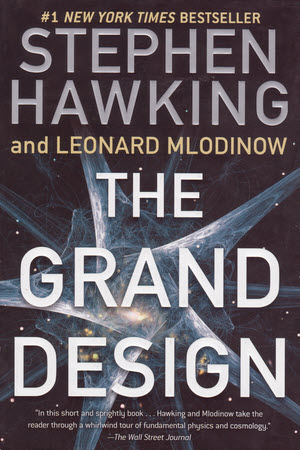 If you think this looks like it belongs here, you haven’t been paying attention. No, books about cosmology, quantum physics, and beyond aren’t what I typically read and I’m clearly not qualified to review them. I was given the book as a gift, I read and enjoyed it, and I intend to tell somebody about it.
If you think this looks like it belongs here, you haven’t been paying attention. No, books about cosmology, quantum physics, and beyond aren’t what I typically read and I’m clearly not qualified to review them. I was given the book as a gift, I read and enjoyed it, and I intend to tell somebody about it.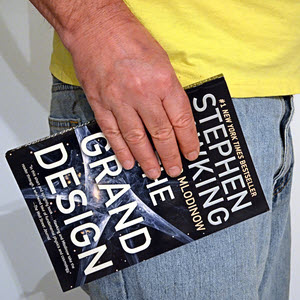 I started off admitting that this book was really out of place here. I do a lot of my reading over meals in restaurants and it was rather out of place in some of the joints where I eat, too. I quickly worked out a way to carry the book that cut down considerably on the funny looks aimed my way.
I started off admitting that this book was really out of place here. I do a lot of my reading over meals in restaurants and it was rather out of place in some of the joints where I eat, too. I quickly worked out a way to carry the book that cut down considerably on the funny looks aimed my way.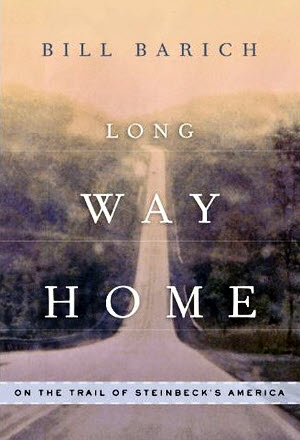 Not long ago, a friend mentioned a couple of travel related books he had just read and, when I found one of them available at the local library, I decided to give it a read. It’s Bill Barich’s Long Way Home – On the Trail of Steinbeck’s America. The subtitle is a reference to Steinbeck’s Travels with Charlie which Barich cites as an inspiration for his own road trip and book. The books’ basics are certainly similar. Each is the product of a successful American writer of a certain age undertaking a cross country road trip with hopes of learning something of a nation he’s been out of touch with for awhile. Steinbeck did it in 1960; Barich in 2008. Forty-eight years is not the only difference. Steinbeck did it in a custom built camper with unlimited time and, for all practical purposes, an unlimited budget. Barich did it in a rented Ford Focus, with a six week schedule, and a budget he calls “tight”. Steinbeck sort of circled the country, starting and ending at his home in Sag Harbor, New York. Barich makes one more or less straight pass through the center of the nation. But, for me, the biggest difference is that, while I’ve never really cared for Travels with Charlie, I ended up enjoying Long Way Home. Of course, Steinbeck didn’t seem to enjoy his own trip very much; Barich did. I think that rubbed off on me.
Not long ago, a friend mentioned a couple of travel related books he had just read and, when I found one of them available at the local library, I decided to give it a read. It’s Bill Barich’s Long Way Home – On the Trail of Steinbeck’s America. The subtitle is a reference to Steinbeck’s Travels with Charlie which Barich cites as an inspiration for his own road trip and book. The books’ basics are certainly similar. Each is the product of a successful American writer of a certain age undertaking a cross country road trip with hopes of learning something of a nation he’s been out of touch with for awhile. Steinbeck did it in 1960; Barich in 2008. Forty-eight years is not the only difference. Steinbeck did it in a custom built camper with unlimited time and, for all practical purposes, an unlimited budget. Barich did it in a rented Ford Focus, with a six week schedule, and a budget he calls “tight”. Steinbeck sort of circled the country, starting and ending at his home in Sag Harbor, New York. Barich makes one more or less straight pass through the center of the nation. But, for me, the biggest difference is that, while I’ve never really cared for Travels with Charlie, I ended up enjoying Long Way Home. Of course, Steinbeck didn’t seem to enjoy his own trip very much; Barich did. I think that rubbed off on me.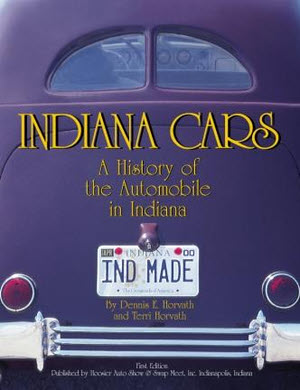 Yes, I am late to the party. This book on Indiana’s automotive history was published in 2002 but, since it’s about old cars, none of the history has changed and the cars have only gotten older.
Yes, I am late to the party. This book on Indiana’s automotive history was published in 2002 but, since it’s about old cars, none of the history has changed and the cars have only gotten older.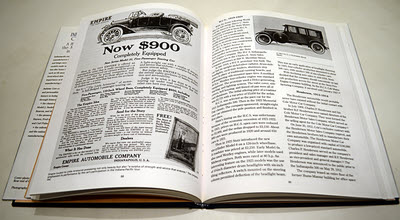 Once the background is set, the book moves onto the various manufacturers. Not every mark ever built in the state is covered but there are sizable sections on what the Horvaths consider “Significant Automobiles”. The reading isn’t so dry now. There are fairly lengthy articles on the likes of Duesenberg and Studebaker and shorter ones on others. The book is well illustrated with photographs and clippings from period literature. Facts are seasoned with entertaining anecdotes. Joe Cole got his first car running and took off without installing the brakes. Lack of fuel finally stopped it after many laps around Monument Circle in Indianapolis. In 1891, Charley Black’s six-block drive in a Benz included crashing into both a surrey and a shop window. Those were the good old days.
Once the background is set, the book moves onto the various manufacturers. Not every mark ever built in the state is covered but there are sizable sections on what the Horvaths consider “Significant Automobiles”. The reading isn’t so dry now. There are fairly lengthy articles on the likes of Duesenberg and Studebaker and shorter ones on others. The book is well illustrated with photographs and clippings from period literature. Facts are seasoned with entertaining anecdotes. Joe Cole got his first car running and took off without installing the brakes. Lack of fuel finally stopped it after many laps around Monument Circle in Indianapolis. In 1891, Charley Black’s six-block drive in a Benz included crashing into both a surrey and a shop window. Those were the good old days.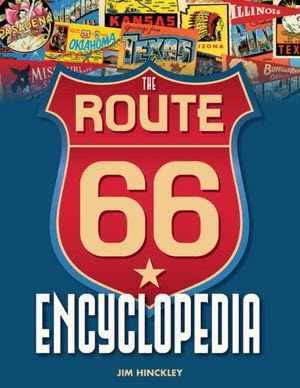 E-N-C-Y-C-L-O-P-E-D-I-A
E-N-C-Y-C-L-O-P-E-D-I-A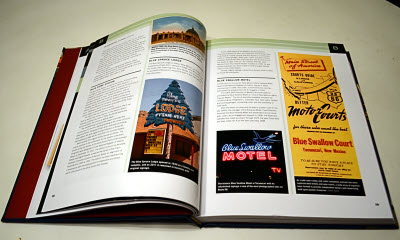 This is not my first exposure to Hinckley’s work and, as I’ve said before, the man does his homework. Of course, everybody knows about the Gemini Giant and it’s not too tough to learn that it was made by International Fiberglass. But learning how many cowboys the company made for Phillips Petroleum and how they managed to make some giants with beards and some without and that the company’s founder once set a world record in sailing? That takes some digging. And practically any book with 66 on the cover will tell you how Cyrus Avery was instrumental in getting the pair of sixes for the route after the desired Highway 60 designation was assigned elsewhere. Hinckley does that and also tells us quite a bit about some of his other activities such as his prior role in creation of the Albert Pike Highway and his subsequent role in helping form the U.S. 66 Highway Association. Incidentally, although I have not read every article in the encyclopedia, that is the only mention of the U.S. 66 Highway Association I found. Its post-WWII spark plug, Jack Cutberth, was one of the names I thought I might see in the book but didn’t.
This is not my first exposure to Hinckley’s work and, as I’ve said before, the man does his homework. Of course, everybody knows about the Gemini Giant and it’s not too tough to learn that it was made by International Fiberglass. But learning how many cowboys the company made for Phillips Petroleum and how they managed to make some giants with beards and some without and that the company’s founder once set a world record in sailing? That takes some digging. And practically any book with 66 on the cover will tell you how Cyrus Avery was instrumental in getting the pair of sixes for the route after the desired Highway 60 designation was assigned elsewhere. Hinckley does that and also tells us quite a bit about some of his other activities such as his prior role in creation of the Albert Pike Highway and his subsequent role in helping form the U.S. 66 Highway Association. Incidentally, although I have not read every article in the encyclopedia, that is the only mention of the U.S. 66 Highway Association I found. Its post-WWII spark plug, Jack Cutberth, was one of the names I thought I might see in the book but didn’t.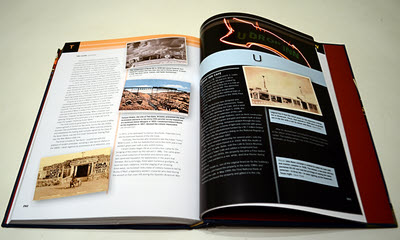 Even without Cutberth, the Route 66 Encyclopedia includes an impressive number and range of articles and many of those articles go into significant depth. The writing isn’t flowery but neither is it terse. It’s lean and efficient. The goal is to get as much factual information between the covers as possible and keep it readable. Hinckley does that rather well. Moreover, I think you’d probably still get your money’s worth if you decided to forgo the text altogether and just look at the pictures.
Even without Cutberth, the Route 66 Encyclopedia includes an impressive number and range of articles and many of those articles go into significant depth. The writing isn’t flowery but neither is it terse. It’s lean and efficient. The goal is to get as much factual information between the covers as possible and keep it readable. Hinckley does that rather well. Moreover, I think you’d probably still get your money’s worth if you decided to forgo the text altogether and just look at the pictures.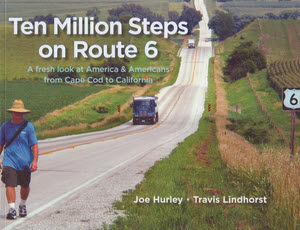 “It’s not the destination but the journey.”
“It’s not the destination but the journey.”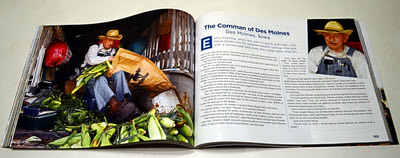 Sometimes Lindhorst’s photos are coordinated tightly with Hurley’s text and sometimes they just represent the general area. Either way they are always wonderful additions to the story. Some would be right at home in a super-wide hardback coffee table book but then I probably couldn’t afford it. The fairly large format paperback with glossy pages serves the photos well in an affordable package.
Sometimes Lindhorst’s photos are coordinated tightly with Hurley’s text and sometimes they just represent the general area. Either way they are always wonderful additions to the story. Some would be right at home in a super-wide hardback coffee table book but then I probably couldn’t afford it. The fairly large format paperback with glossy pages serves the photos well in an affordable package.